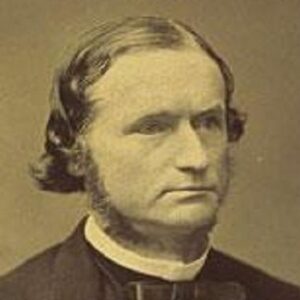Gustav Robert Kirchhoff was a German physicist who contributed significantly to thermochemistry and electrochemistry. His discoveries aided in the advancement of fundamental knowledge in the fields of black-body radiation, electrical circuits, and spectroscopy. He has rules named after him in thermochemistry, circuit theory, and thermal emission. He established the foundation for utilizing mathematics to comprehend the science of physics, which was a significant stride forward in the area. Despite multiple obstacles in his life, including his infirmity, he remained dedicated to his research and continued to investigate diverse fields of science. Many physicists today apply his laws to solve complex physics issues, and they are named after him. His numerous discoveries during his lifetime will be remembered for their importance in the knowledge of modern theoretical physics. His life demonstrated that major scientific breakthroughs may be achieved via brains and dedication. His life’s effort could be defined as a fantastic tribute to science, and he is a symbol of greatness for every aspiring scientist. Modern physics might not be where it is today if not for his extraordinary contributions.
Childhood and Adolescence
His family was a part of Konigsberg’s intellectual society, and he was reared with the belief that serving the state was the only viable option for him. In Prussia at the time, university professors were public servants, and his parents expected him to become a professor and serve the state.
He acquired his early schooling from Franz Neumann, a well-known theoretical physicist, and Friedrich Richelot, a mathematician, at the Albertus University of Konigsberg.
Franz Neumann and Friedrich Julius Richelot were his professors at the university where he studied. In 1845, while still at university, he produced his first significant contribution to electrical current research, ‘Kirchhoff’s Law.’
In 1847, he acquired his PhD and relocated to Berlin, where he remained until being appointed to a chair in Breslau.
Career
He became a professor of physics at the University of Breslau in 1850, when he met Robert Bunsen and formed a lifetime friendship with him. He worked there for four years before being offered a position as Professor of Physics at Heidelberg University.
In 1858, he published ‘Kirchhoff’s law of thermochemistry,’ which said that the difference in heat capacity between products and reactants determines the variation in heat of a chemical reaction.
He proposed his law of heat radiation in 1859, while in Heidelberg. In 1861, he was able to prove it, and it became a well known physics and chemistry law.
He and his colleague Robert Bunsen studied the sun’s spectrum in 1861 and were able to identify chemical elements in the sun’s atmosphere. In the course of their research, they discovered two new elements, caesium and rubidium, and established that the elements generate colored lights when heated to specified temperatures.
After all of these findings, he was awarded the first professorship at the University of Berlin dedicated to theoretical physics in 1875, which he retained until his death.
He published his best-known book, ‘Vorlesungen über mathematische Physik,’ after assuming the position at Berlin.
Major Projects of Gustav Kirchhoff
Kirchhoff’s Circuit Laws, which he introduced in 1845, was his first and most important accomplishment. It allowed currents, voltages, and resistances in electrical circuits with many loops to be calculated. The algebraic sum of currents in a network of conductors meeting at a location is zero, according to the first law. The directed total of voltages surrounding any closed network is zero, according to the second law.
He was the first scientist to demonstrate that electric current moves at the speed of light over a wire with no resistance in 1857.
By formalizing three rules that characterize the spectrum composition of light emitted by incandescent objects, he made a significant contribution to the study of spectroscopy. He is credited with coining the term “black body radiation” and being the first to describe the dark lines in the sun’s spectrum.
Achievements & Awards
For his studies on solar spectra, he was given the ‘Rumford Medal’ in 1862.
In 1877, he and Robert Bunsen received the ‘Davy Medal’ for their groundbreaking study and discoveries in spectrum analysis.
He was the first posthumous recipient of the ‘Janssen Medal’ in 1887 for his outstanding contributions to the science of spectroscopy.
Personal History and Legacy
He married Clara Richelot, the daughter of his mathematics professor, Richelot, after graduating in 1847. Clara died in 1869, leaving him to raise his two daughters and three boys alone.
His existence as a single dad was made even more difficult by a handicap that required him to spend the majority of his time on crutches or in a wheelchair.
In Heidelberg, he married Luise Brömmel, a Goslar native, in 1872.
During his professorship in Berlin, he died on October 17, 1887, at the age of 63. He was laid to rest in Berlin’s St. Matthäus Kirchhoff Cemetery.
Estimated Net Worth
The Estimated Net Worth of Gustav Kirchhoff is unknown


